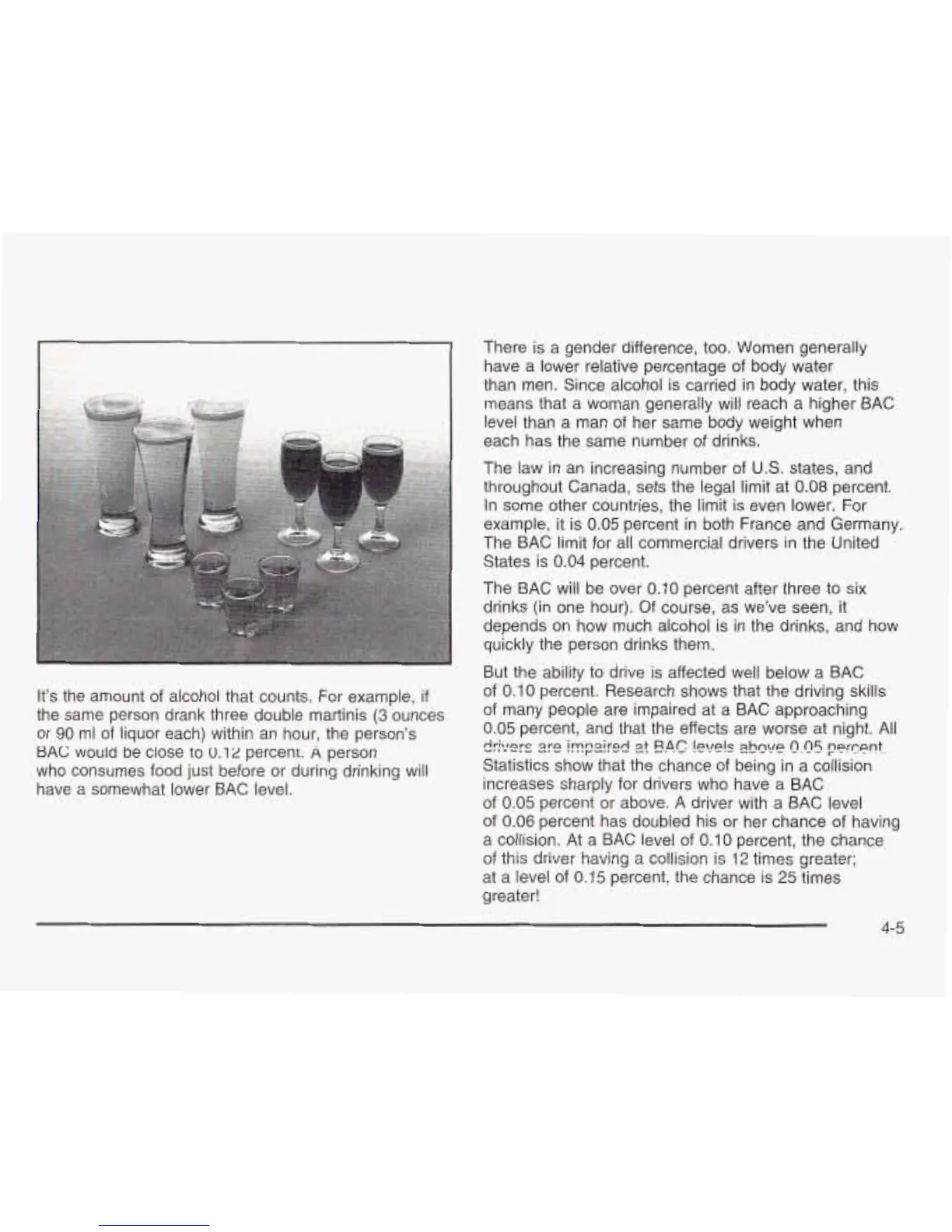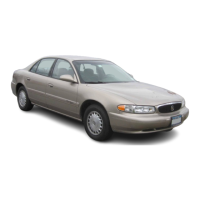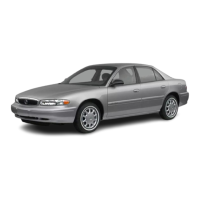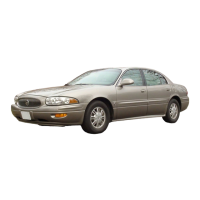It’s the amount of alcohol that counts. For example,
if
the same person drank three double martinis
(3
ounces
or
90
mI of liquor each) within an hour, the person’s
BAG
would be close
to
0.12
percent.
A
person
who consumes food just before or during drinking will
have a somewhat lower BAC level.
There is a gender difference, too. Women generally
have a lower relative percentage of body water
than men. Since alcohol is carried in body water, this
means that a woman generally will reach a higher BAC
level than a man of her same body weight when
each has the same number of drinks.
The law
in
an increasing number of
US.
states, and
throughout Canada, sets the legal limit at
0.08
percent.
In some other countries, the limit is even lower. For
example,
it
is
0.05
percent in both France and Germany.
The BAC limit for all commercial drivers
in
the United
States is
0.04
percent.
The BAC will be over
0.10
percent after three to six
drinks (in one hour). Of course, as we’ve seen,
it
depends on how much aiconoi is in the drinks, and how
quickly the person drinks them.
But the ability to drive
is
affected well below a BAC
of
0.10
percent. Research shows that the driving skills
of many people are impaired at a BAC approaching
0.05
percent, and that the effects are worse at night. All
Statistics show that the chance of being in a collision
increases sharply for drivers who have a BAC
of
0.05
percent or above. A driver with a BAC level
of
0.06
percent has doubled his or her chance of having
a collision. At a BAC level of
0.10
percent, the chance
at a level of
0.15
percent, the chance is
25
times
greater!
&+:ers
@‘I:&
’t
EA.c. !p\.!p!s
zhQ\!p
Q-nE;
percent.
0:
this
driver
having
a
collisim
is
12
times
grezter;
4-5

